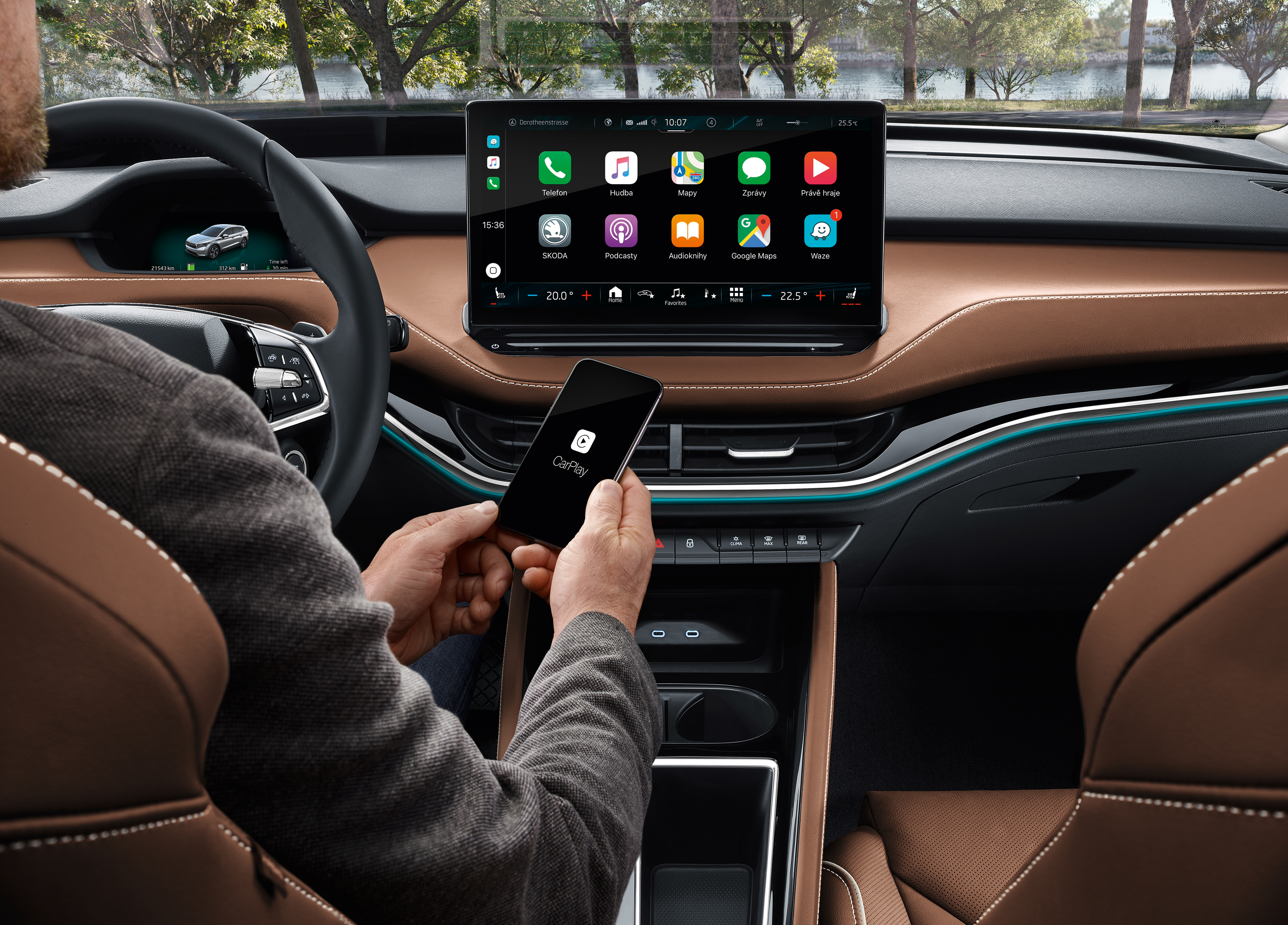The lights on the dashboard, the pictograms on buttons, the instrument panel, or the appearance and functioning of the infotainment user interface. All this and many other details have to be designed by someone. At ŠKODA, this is the task of the young HMI design team, which was established around five years ago. Today, it employs eight people. The team does not design the actual levers, buttons or infotainment, but how the individual elements look and react to user instructions.
 Designers from ŠKODA’s HMI team with the VISION iV concept.
Designers from ŠKODA’s HMI team with the VISION iV concept.
The speed of development of HMI (human-machine interface) has only picked up in car companies relatively recently with the advent of digitalisation, which has brought a shift away from the traditional analogue dials and the obligatory radio. The interface is becoming an important part of brand identity. “At the same time, user interfaces and the user experience are areas with huge potential for innovation: we can create the future here and understand the needs of users,” says Federico Fachini, Head of HMI Designers.
 The infotainment system of the ŠKODA ENYAQ iV SUV reacts to its users’ habits and requirements.
The infotainment system of the ŠKODA ENYAQ iV SUV reacts to its users’ habits and requirements.










































